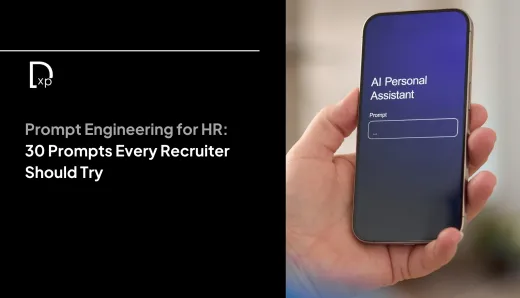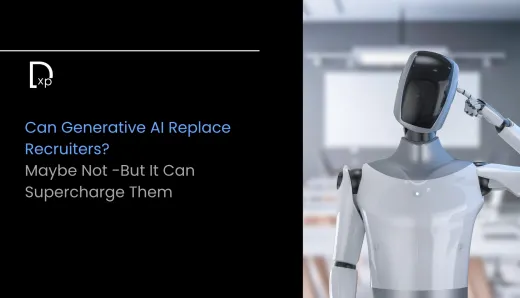Step-by-Step: Build Your AI Hiring Stack with Indian Tools

Automation in HR is no longer just a buzzword. It's the survival kit for technical recruiters who’re expected to fill roles yesterday, not next quarter. If you’re in a fast-paced hiring environment in India, especially in a big-shot company with thousands of applications flooding in, this blog is built just for you.
The days of sifting through resumes manually and toggling between disconnected tools are gone. Today, AI is not just helping, it’s taking over the heavy lifting. And if you're not leveraging automation in HR already, you're bleeding time, money, and good candidates. So let’s fix that.
This blog walks you through how to build your own AI-driven hiring stack using Indian tools (and ChatGPT), without burning your budget or time. If your goal is to move fast, stay sharp, and close top tech talent before your competitors even log in, read on.
Why You Can't Ignore Automation in HR Anymore
The talent market is ruthless. Top developers are off the market in days. With referral networks, social recruiting, and job boards firing all at once, there’s no time to rely on old-school methods. Automation in HR is the only way to scale intelligently.
Indian recruiters face a unique combo: high application volume, tight timelines, complex skill requirements, and the need to personalize candidate experiences. Manual workflows can’t keep up. The result? Lost candidates, mis-hires, and frustrated hiring managers.
That’s exactly why building an AI-powered hiring stack tailored to Indian systems, databases, and workflows is no longer optional. It’s mission-critical.
Step 1: Your ATS Is Your Foundation ; Pick an Indian One
First things first. Your applicant tracking system (ATS) is ground zero for automation. You want something that’s built for Indian hiring, handles volume well, and integrates with Indian job boards and Naukri’s APIs.
Two standout options:
- Zoho Recruit – Built in India, scalable, and well-integrated with Indian platforms.
- HireXpert – Especially good if you’re in a larger org and need collaboration between HR and tech panels.
These tools aren’t just storage bins for resumes. When synced with ChatGPT workflows, they become dynamic systems that can rank, sort, and even communicate with candidates autonomously. That’s the real power of automation in HR.
Step 2: Integrate ChatGPT for JD Optimization and Resume Screening
Here’s where it gets juicy.
Take your raw job requirements and feed them into ChatGPT to auto-generate JDs that are not just clear but also optimized for conversion. Then integrate ChatGPT with your ATS using tools like Zapier or Make.com.
Why? Because ChatGPT can summarize resumes, match them to JDs, and flag the best-fit candidates in seconds. You’re not stuck reading 400 PDFs manually.
Let’s say you’re hiring a React dev. ChatGPT can help you auto-score applicants based on specific stack experience (React 18, TypeScript, Redux Toolkit), screen for communication skills based on writing samples, and even craft rejection emails that don’t sound robotic.
This is automation in HR working exactly how it should; cutting grunt work, not corners.
Step 3: Layer with Indian Assessment Platforms
Technical hiring in India? You’re not skipping assessments.
Plug in tools like iMocha, Mercer Mettl, or DoSelect to your stack. These Indian platforms let you automate skill evaluation without sending developers into test fatigue. You can trigger assessments from your ATS or even auto-send based on resume scores generated by ChatGPT.
Let’s be honest; one weak link in your funnel (like a delayed test invite or unclear instructions) and the best candidate drops off. Automating this step ensures smooth handoffs between sourcing, screening, and interviewing.
Also, automation in HR is not just about speed. It’s about quality at speed. With these assessments tailored to the Indian context (think GATE-level logic, CS fundamentals, and even domain-specific tests), you reduce mis-hires drastically.
Step 4: Candidate Engagement via WhatsApp Automation
Indians read WhatsApp faster than email. So stop sending cold ATS emails that land in spam.
Use platforms like Gallabox, Wati, or Yellow.ai to build your WhatsApp flows. ChatGPT can write the actual messages for you; whether it’s interview reminders, test instructions, or even offer rollouts. You can even set up two-way chats where basic queries (location, compensation range, JD clarifications) are handled automatically.
This kind of automation in HR hits the nerve: high engagement without HR chasing candidates manually. Especially when dealing with passive tech talent, this is your edge.
Step 5: Interview Scheduling Without the Pain
You shouldn’t be playing calendar ping-pong in 2025.
Plug in Indian tools like Tydy or go hybrid with Calendly + Bharat-specific calendars. Build a flow where candidates pick slots, interviewers get reminders, and reschedules are handled by bots. The result? No-shows drop by 40–50%.
This part of your hiring stack is a game-changer, especially for panel interviews. Imagine setting up multi-round tech panels, syncing calendars across functions, and rescheduling automatically if someone backs out. That’s what smart automation in HR delivers.
Step 6: Post-Offer Automation (Because Drop-Offs Are Real)
Offer rollout is not the finish line. Especially in Indian tech hiring, drop-offs between offer and joining can crush your numbers.
Use platforms like Darwinbox or Keka to build workflows that keep candidates warm post-offer. Automate check-ins, collect documents, share onboarding materials: all without manual follow-ups. ChatGPT can help personalize these messages based on the candidate’s role, region, or preferences.
With automation in HR, you turn post-offer chaos into structured communication that actually improves joining ratios.
Final Thoughts: Own Your Stack, Don’t Rent It
You don’t need to buy a fancy “AI hiring platform” that promises the moon. Build your own stack using the tools your team already understands, plug ChatGPT in smartly, and focus on execution.
Indian recruiters don’t need imported solutions with a Western hiring bias. You need tools that speak your language, work at Indian scale, and don’t break under volume pressure. That’s exactly what a smart automation in HR strategy delivers.
Once you set this up, you’ll spend less time in spreadsheets and more time closing roles. And isn’t that the real win?




